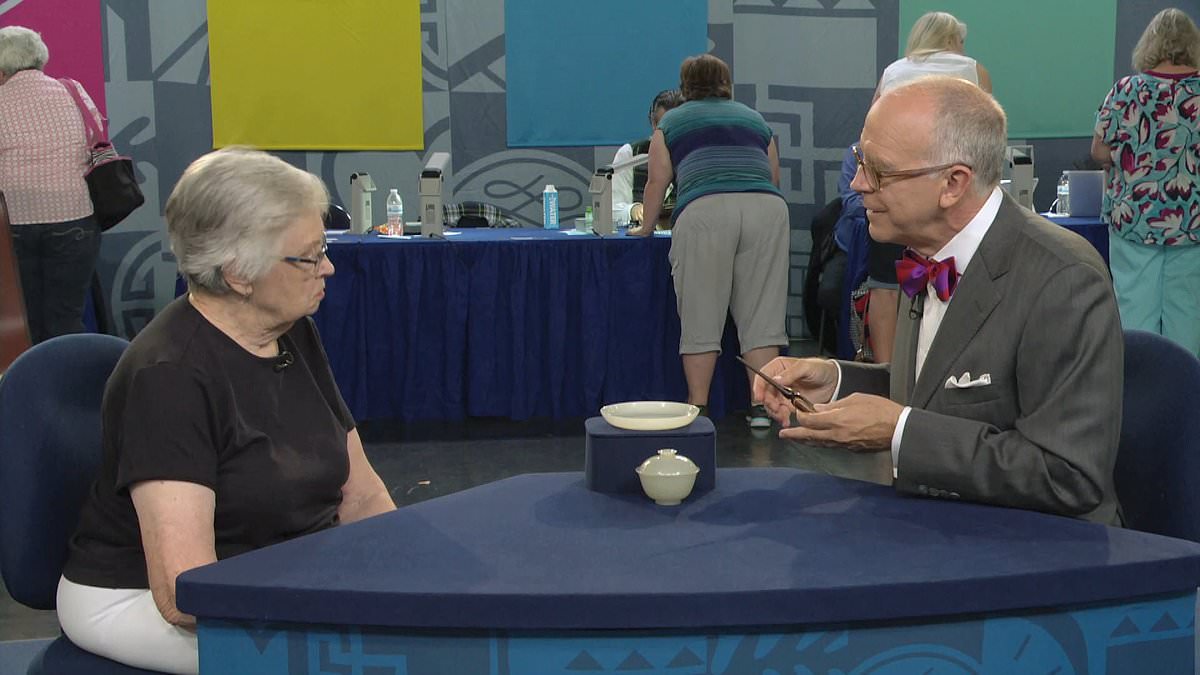An Antiques Roadshow guest was left utterly shocked to find that her late husband’s rice bowl was valued at a low five figures.
The guest started explaining, in the resurfaced clip, that the rice bowl and its corresponding plate belonged to her mother and father-in-law.
She said her father-in-law was the first consul general for the Republic of Korea – more commonly known as South Korea – and handed the rice bowl down to her husband.
The appraiser, Lark E. Mason, then cut in to give some backstory about the piece.
Mason noticed that the bowl and cover were separate from the plate because they were different colors.
‘Oh, really? So long as I’ve had them, they’ve always been together,’ the guest said.
Mason added that the plate was never meant to be a stand for the bowl because there’s no iconography or detailing on the plate to indicate as such.
Moving on from the first revelation about the plate’s lack of a relationship to the bowl, Mason then told the guest that the plate had features reminiscent of 18th century China.
‘You notice it’s got a very wide center section that’s flat and then it curves up. This shape is a distinctive Chinese shape,’ Mason said.
‘This particular shape was something that was… a shape that was favored in the 18th century in China, and into the early 19th century.’
He concluded that the dish was likely made closer to the 19th century because 18th century dishes would have had a mark on the underside.
‘The very white color of this is indicative of a type of quality that would have been only available for the very wealthiest of people. That’s what helps us to understand a timeframe when this was made,’ Mason said.
He used a similar method to figure out the time period from which the bowl and cover were from, though he theorized that the dual piece was from the 20th century.
After the deep dive into centuries-old Chinese pottery techniques, Mason asked the guest to take guess about how much her heirloom was worth.
‘Maybe $1,000?’ she ventured.
‘Well, I think it’s worth a bit more than that,’ he said.
He estimated that the bowl and its corresponding plate were wroth $15,000 to $25,000 at auction.
As he said $15,000, the guest’s face dropped into one of disbelief and she put her hand over her mouth.
‘Oh, my heavens. Oh, my heavens! That is stunning.’
